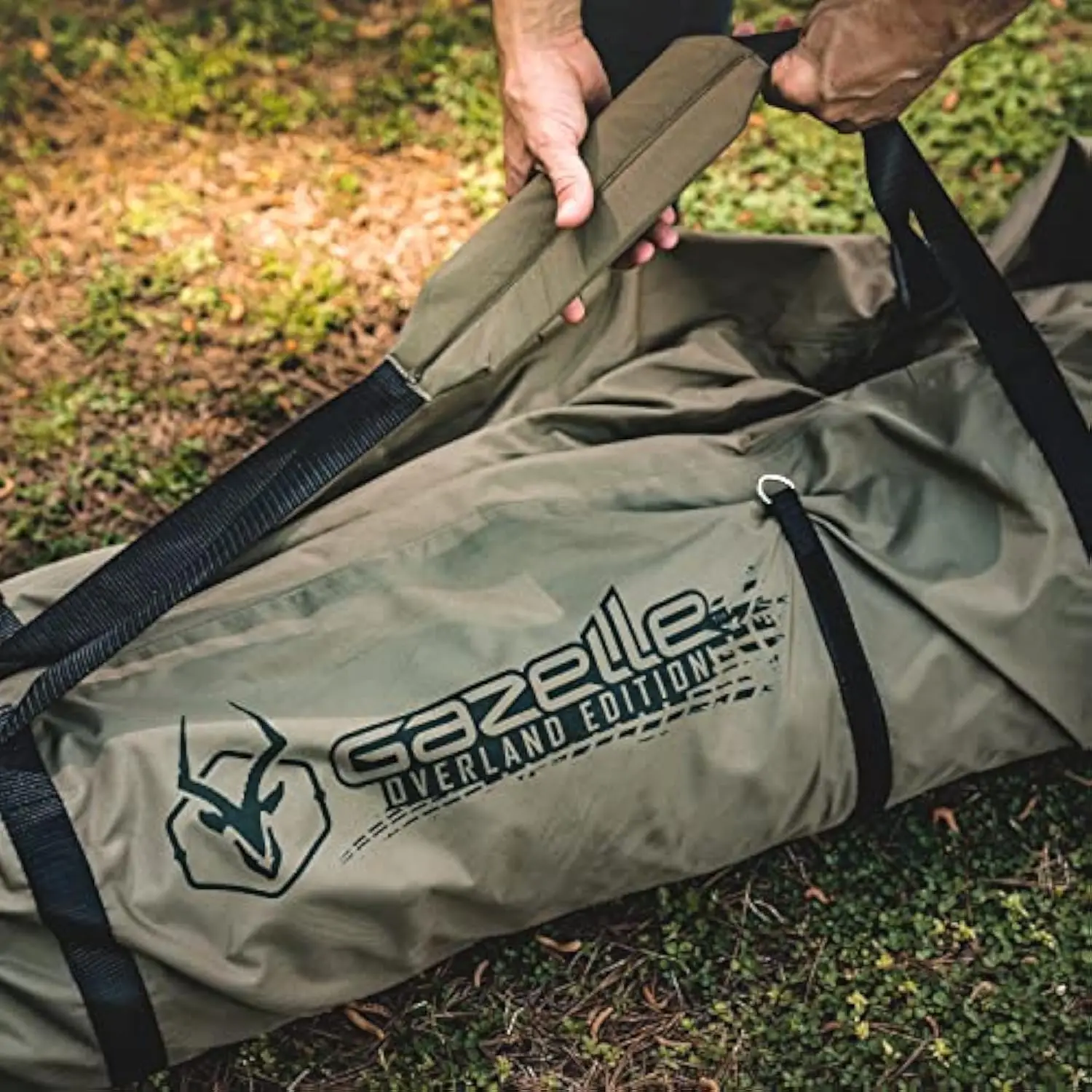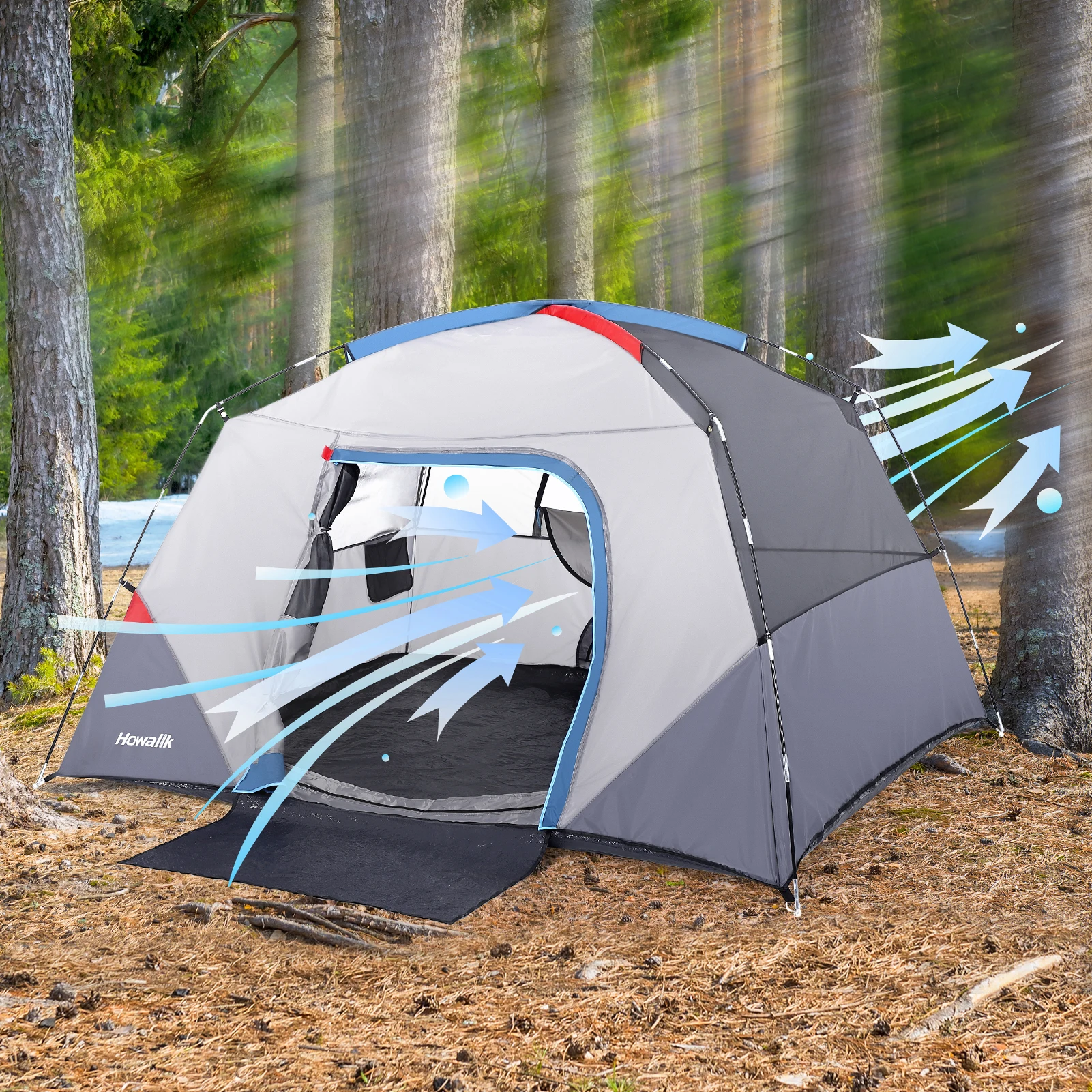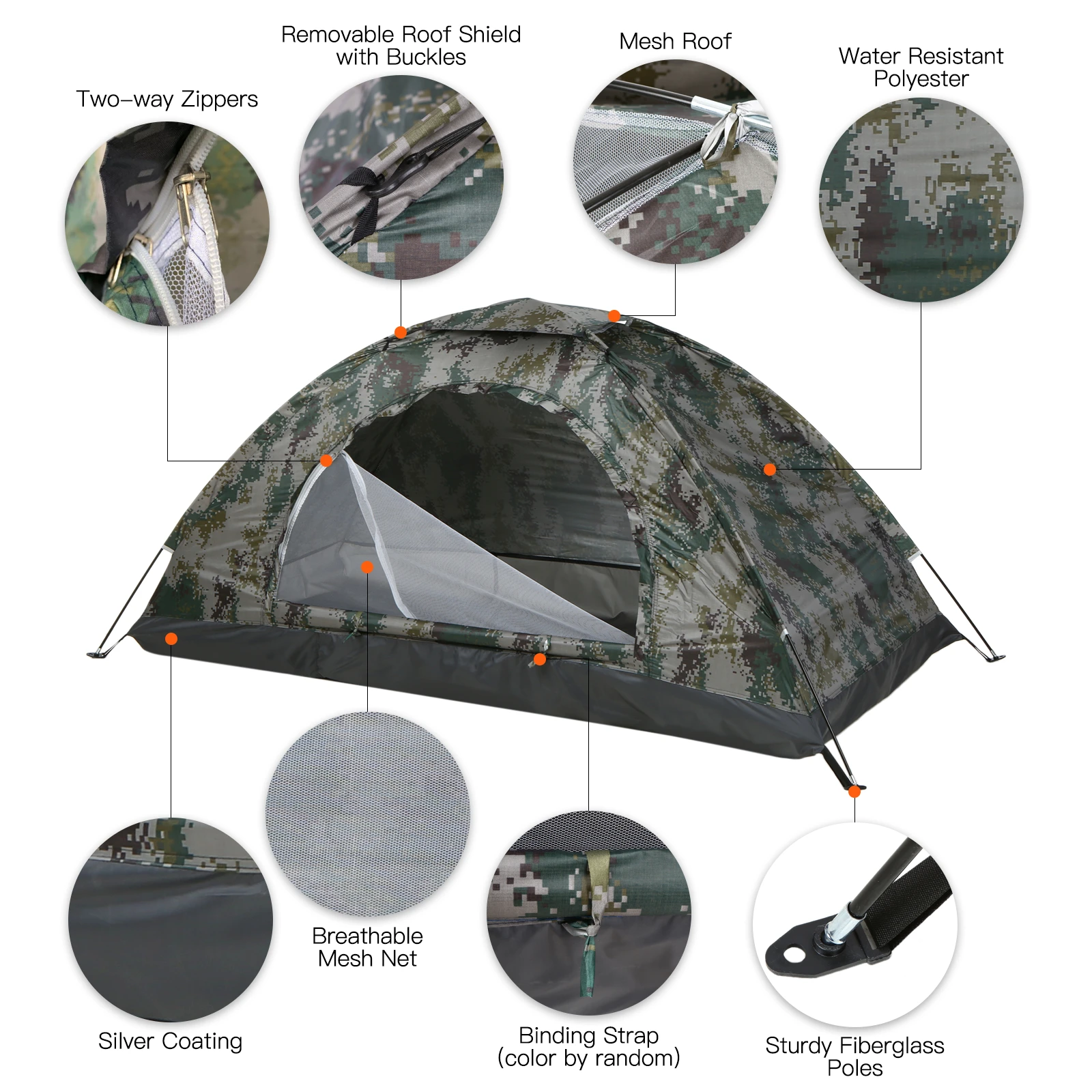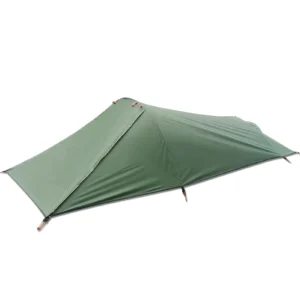1. Introduction: Understanding the Importance of Compact Shelters for Two
When venturing outdoors as a pair, finding the perfect balance between portability and comfort becomes crucial. A truly “compact” shelter isn’t just small—it’s an intelligently designed space that manages to provide essential protection while minimizing weight and packed volume. For couples or adventure partners, this balance becomes even more delicate.
Choosing the right compact shelter for two requires navigating several important trade-offs:
- Weight vs. Space: How light can you go while still maintaining comfort for two adults?
- Durability vs. Packability: More durable materials often mean more weight and volume
- Weather Protection vs. Ventilation: Better storm protection typically comes with reduced airflow
The shelter you choose will significantly impact your outdoor experience, whether you’re planning weekend hikes or extended wilderness journeys. The ideal option varies dramatically depending on your specific needs—a shelter perfect for summer backpacking might be completely unsuitable for winter mountaineering.
Most compact two-person shelters fall within a weight range of 1-5 lbs (0.45-2.3 kg), with packed volumes varying from as small as a water bottle for minimalist options to the size of a small sleeping bag for more comfortable designs. Understanding these shelter options for two campers becomes essential for making informed decisions about your outdoor gear investments.
2. Best Overall Compact Shelter for Two: Top Performer Analysis
Our top overall performer strikes an exceptional balance between weight, livability, and weather protection. This standout shelter weighs just 2.8 lbs (1.27 kg) yet provides 29 square feet of floor space—enough for two standard sleeping pads with room to spare.
Key specifications:
– Packed size: 16 × 5 inches (40.6 × 12.7 cm)
– Floor dimensions: 86 × 52 inches (218.4 × 132.1 cm)
– Peak height: 40 inches (101.6 cm)
– Doors/vestibules: 2
What makes it exceptional:
– Nearly vertical sidewalls maximize usable interior space
– Two-door design eliminates the need to climb over your partner
– Premium DAC aluminum poles provide stability in winds up to 35 mph
– 20D ripstop nylon with silicone coating offers excellent durability-to-weight ratio
Potential drawbacks:
– Premium materials command a higher price point
– Requires careful site selection for optimal performance
– Not suitable for winter camping or heavy snow loads
The clever design elements incorporated into this shelter demonstrate how choosing the ultimate compact shelter for two often involves recognizing thoughtful engineering that maximizes livable space while minimizing packed weight. The semi-freestanding design strikes an excellent balance between quick setup and stability, requiring only minimal staking in most conditions.
3. Ultralight Champions: Best Minimal Weight Options for Backpacking Pairs
When every ounce matters on long trails, ultralight shelters become essential companions. The most impressive options in this category weigh less than 2 pounds (0.9 kg) while still accommodating two people—a remarkable engineering achievement.
Ultralight shelters typically employ one of two primary design approaches:
1. Trekking pole shelters that eliminate dedicated poles, saving 8-12 ounces
2. Minimalist freestanding designs using ultralight materials and simplified structures
These weight savings come with notable trade-offs. Most sub-2-pound shelters feature:
– Limited headroom, often with sloping walls that reduce usable space
– Single-wall construction that may increase condensation
– Thinner floor materials requiring more careful site selection
– More complex or time-consuming setup procedures
For two hikers pursuing ultralight adventures, the floor dimensions become particularly crucial. Look for shelters at least 50 inches (127 cm) wide to accommodate two standard sleeping pads. Many designs in this category optimize length rather than width, so carefully check specifications.
Several outstanding ultralight 2-person tents incorporate Dyneema Composite Fabric (formerly called Cuben Fiber), which offers remarkable strength-to-weight ratios but comes with a higher price tag. Silnylon alternatives provide more affordable ultralight options with modest weight penalties.
4. Best Budget-Friendly Compact Shelters Without Compromising Quality
Finding an affordable compact shelter doesn’t mean settling for inferior quality. Several excellent options under $200 deliver impressive performance through smart design choices rather than premium materials.
Value-focused features to look for:
– Polyester rainflies instead of silicone-coated nylon (more affordable but slightly heavier)
– Aluminum poles rather than carbon fiber (minor weight penalty for significant cost savings)
– Simplified vestibule designs that still provide adequate storage
– Thoughtful reductions in non-essential features
The best budget shelters typically weigh between 3-4 pounds (1.4-1.8 kg)—about 8-16 ounces more than premium counterparts, yet still quite manageable for two people to carry. Weather protection remains comparable, with many budget-friendly options using 68-75D polyester rainflies that provide excellent water resistance and better UV protection than some lighter materials.
Key maintenance practices become particularly important with budget shelters. Careful drying before storage, gentle cleaning, and proper tensioning during setup can significantly extend their lifespan. The best compact backpacking tent options in this category deliver 90% of the performance of premium models at half the cost when properly maintained.
5. Maximizing Living Space: Most Livable Compact Shelters for Two
Interior volume—not just floor area—determines how comfortable a shelter feels for two people. The most livable compact shelters utilize vertical or near-vertical wall designs that maximize usable space without increasing packed size.
Hub-based pole structures represent the most significant advancement in creating livable compact shelters. These designs use interconnected pole systems to push fabric outward, creating more vertical walls than traditional dome structures. The result is dramatically increased headroom and shoulder space without weight penalties.
Door configuration significantly impacts livability for two occupants. Dual-door designs eliminate the need to climb over each other for midnight bathroom trips, while strategic placement at opposite ends maximizes interior flow. The most livable designs incorporate doors that can be secured in multiple configurations, allowing for ventilation adjustment without sacrificing privacy.
Vestibule design becomes particularly crucial in compact shelters. The most effective designs provide at least 5-7 square feet of covered storage per person while adding minimal weight. Some innovative models incorporate vestibules that can be reconfigured as awnings in good weather, effectively expanding living space.
When evaluating compact shelters, many campers wonder is a 2-person tent actually big enough? The answer depends heavily on these design factors rather than simple floor dimensions, with clever architectural approaches making even modest-sized shelters feel surprisingly spacious.
6. All-Season Protection: Compact Weather-Resistant Shelters for Challenging Conditions

When facing harsh weather conditions, specialized shelters provide critical protection while maintaining reasonable portability. True four-season compact shelters for two typically weigh between 4-6 pounds (1.8-2.7 kg)—heavier than three-season alternatives but significantly lighter than traditional mountaineering tents.
The pole structure becomes the defining feature of all-season shelters, with crossed and reinforced designs creating exceptional stability. The most effective designs employ:
– Multiple pole crossing points to distribute wind and snow loads
– Lower profiles to minimize wind exposure
– Steeper wall angles to shed snow effectively
– Strategic guy-out points for additional stability
Ventilation systems in four-season shelters must be more sophisticated to manage condensation in cold conditions. The best designs incorporate adjustable vents positioned to maintain airflow without allowing snow entry, often using waterproof-breathable panels rather than mesh.
Winter-ready shelters employ more robust materials throughout—typically 30-70D fabrics with specialized coatings for improved strength and water resistance. Floor materials in particular see significant reinforcement, often using 70D+ fabrics with higher hydrostatic head ratings (5000mm+) to manage ground moisture and abrasion.
For those seeking serious weather protection, exploring 4-season winter 2-person tents reveals specialized designs that can handle everything from desert windstorms to alpine blizzards while remaining manageable for two people to carry.
7. Minimalist Solutions: Tarps, Bivies, and Emergency Shelters for Two
For those embracing true minimalism or preparing emergency kits, ultra-compact shelter options offer remarkable space and weight savings. These solutions range from sophisticated tarp systems to emergency bivies designed for survival situations.
Tarp configurations optimized for two people:
– A-frame pitch (10×8 ft tarp minimum) – Classic, versatile setup
– Pyramid configuration – Excellent wind shedding with central pole
– Lean-to with ground sheet – Maximizes covered space in mild conditions
– Half-pyramid – Balanced protection and ventilation
Two-person bivy systems offer the ultimate in packed size reduction, with some compressed volumes smaller than a 1-liter water bottle. These solutions work best for:
– Emergency preparedness kits
– Fair-weather adventures where rain is unlikely
– Ultra-distance events where sleep periods are minimal
– Backup protection paired with a larger group shelter
Hybrid approaches often deliver the most practical minimalist solutions. Combining a lightweight tarp with a breathable bivy creates a versatile system that manages condensation better than single-solution approaches while remaining extremely packable. These modular ultralight bivy tent systems allow adaptation to changing conditions and personal preferences.
8. Comprehensive Comparison: Side-by-Side Analysis of Top Compact Two-Person Shelters
| Shelter Type | Weight | Packed Size | Floor Area | Peak Height | Doors | Weather Rating | Price Range |
|---|---|---|---|---|---|---|---|
| Best Overall | 2.8 lbs (1.27 kg) | 16×5 in (40.6×12.7 cm) | 29 sq ft | 40 in (101.6 cm) | 2 | 3-season | $$$$ |
| Ultralight | 1.75 lbs (0.79 kg) | 12×4 in (30.5×10.2 cm) | 25 sq ft | 38 in (96.5 cm) | 1 | 3-season | $$$$ |
| Budget-Friendly | 3.5 lbs (1.59 kg) | 18×6 in (45.7×15.2 cm) | 30 sq ft | 42 in (106.7 cm) | 2 | 3-season | $$ |
| Most Livable | 3.2 lbs (1.45 kg) | 18×6 in (45.7×15.2 cm) | 32 sq ft | 44 in (111.8 cm) | 2 | 3-season | $$$$ |
| All-Season | 5.4 lbs (2.45 kg) | 20×7 in (50.8×17.8 cm) | 28 sq ft | 38 in (96.5 cm) | 2 | 4-season | $$$$ |
| Tarp System | 1.2 lbs (0.54 kg) | 8×4 in (20.3×10.2 cm) | Variable | Variable | Open | 3-season | $$ |
| Bivy Shelter | 1.4 lbs (0.64 kg) | 10×4 in (25.4×10.2 cm) | 25 sq ft | 26 in (66 cm) | 0 | 3-season | $$ |
When comparing these options, consider your specific priorities. Ultralight models excel for long-distance hiking but sacrifice comfort. All-season options provide security in harsh conditions but carry weight penalties. The most livable designs prioritize comfort but may not be the lightest.
The comprehensive range of camping shelter options for two demonstrates how specialized different designs have become. The “best” option depends entirely on matching shelter characteristics to your specific adventure needs and priorities.
9. Types of Compact Shelters: Understanding Your Options
Compact shelters for two people come in several distinct architectural designs, each with particular strengths and limitations:
Double-wall vs. Single-wall Construction:
– Double-wall: Separate inner tent and rainfly; better condensation management
– Single-wall: Integrated design; lighter weight but more condensation challenges
Freestanding vs. Non-freestanding:
– Freestanding: Can be set up without stakes; easier on hard surfaces
– Non-freestanding: Requires staking for structure; typically lighter but more complex setup
Common Architectural Designs:
– Dome: Excellent space-to-weight ratio; good stability
– Tunnel: Maximum interior volume; requires proper orientation to wind
– Pyramid: Outstanding wind shedding; single-pole simplicity
– A-frame: Simple design; limited headroom
– Modified wedge: Good balance of space and wind performance
Specialized designs like hammock shelters with oversized tarps can accommodate two people but require specific tree spacing and hanging techniques. Hybrid designs that combine elements from multiple shelter philosophies often deliver the best overall performance for two-person use.
Understanding what size tent is good for 2 people involves recognizing that architectural efficiency matters more than simple dimensions. A well-designed 25-square-foot shelter can feel more spacious than a poorly designed 30-square-foot alternative.
10. Weight and Packability: Balancing Portability and Comfort

Understanding shelter weight specifications helps make informed decisions:
- Minimum weight: Just the essential components (tent body, rainfly, poles)
- Packaged weight: Everything included (tent, rainfly, poles, stakes, stuff sacks, guy lines)
- Trail weight: Realistic weight carried (typically between minimum and packaged)
For two-person adventures, weight distribution becomes a significant advantage—sharing components between packs can make carrying even a slightly heavier shelter quite manageable. Common distribution strategies include:
- Split components (one person carries poles/stakes, the other the tent body/rainfly)
- Split by weight (balance the load based on each person’s carrying capacity)
- Alternate carrying days (switch who carries the complete shelter each day)
Packed volume often matters as much as weight, particularly for smaller backpacks or multi-sport adventures. Compression stuff sacks can reduce volume by 15-25%, but overly aggressive compression can damage some materials. Mastering tent packing tips can help you minimize both weight and volume while protecting your shelter investment.
11. Livability Factors: Making a Compact Space Work for Two
Creating a comfortable living space within a compact shelter involves several key measurements beyond simple floor area:
- Minimum width: 50-52 inches (127-132 cm) accommodates two standard sleeping pads
- Length: 84-90 inches (213-229 cm) fits most adults comfortably
- Peak height: 38+ inches (96+ cm) allows sitting up for most people
- Volume: Overall interior air space determines perceived roominess
Strategic tent organization becomes essential in compact spaces. Using vertical storage solutions, creating designated spaces for each person’s gear, and establishing entry/exit protocols significantly improves livability. Some shelters incorporate built-in storage pockets, gear lofts, and vestibule organizers that maximize usable space.
Door configuration dramatically impacts comfort for two people. Dual-door designs eliminate the need to climb over your partner, while side-entry designs often work better than end-entry configurations for two-person use. Maximizing space comfort in ultralight shelters involves careful consideration of these design elements along with thoughtful organization of gear.
12. Weather Protection and Seasonality: Choosing the Right Defense
Weather protection capabilities vary dramatically across shelter designs:
- 3-season shelters: Handle rain, wind, and mild cold; typically feature more mesh for ventilation
- 3+ season shelters: Extended range designs for early winter/late fall use
- 4-season shelters: Full winter capability, including snow loading and extreme winds
Waterproofing is measured by hydrostatic head ratings:
– 1000-1500mm: Minimal rain protection, suitable for mild conditions
– 2000-3000mm: Standard protection for most three-season conditions
– 3000-5000mm: Enhanced protection for extended rain exposure
– 5000mm+: Extreme weather protection for severe conditions
Wind performance depends more on design than specifications. Low-profile, aerodynamic shapes with multiple crossing poles perform better than taller, simpler designs regardless of material. Strategic guy-out points significantly enhance stability when properly utilized.
The best waterproof backpacking tent options incorporate both excellent waterproof ratings and thoughtful design elements like raised bathtub floors, protected entryways, and seam sealing throughout all critical areas.
Lightweight Backpacking Tent, Ultralight Backpacking Tent, Ultralight Bivy Tent
Ultralight Single Person Camping Tent with Aluminum Poles for 3-Season Backpacking Waterproof DesignPrice range: $94.88 through $326.82 Select options This product has multiple variants. The options may be chosen on the product pageLightweight Backpacking Tent, Ultralight Backpacking Tent, Waterproof Backpacking Tent
$391.05 Select options This product has multiple variants. The options may be chosen on the product pageHeavy Duty 4 Season Tent, Mountaineering Tent, Winter Camping Tent
$870.40 Select options This product has multiple variants. The options may be chosen on the product pageCompact Backpacking Tent, Lightweight Backpacking Tent, Waterproof Camping Tent
$335.52 Select options This product has multiple variants. The options may be chosen on the product pageUltralight Backpacking Tent, Ultralight Dome Tent, Winter Camping Tent
Price range: $369.63 through $370.07 Select options This product has multiple variants. The options may be chosen on the product pageHeavy Duty 4 Season Tent, Ultralight Freestanding Tent, Winter Camping Tent
$3,722.66 Select options This product has multiple variants. The options may be chosen on the product page
13. Materials and Durability: What Makes a Shelter Last
Shelter materials dramatically impact both performance and longevity:
Fabric types and their properties:
– Nylon: Lighter, more abrasion-resistant, stretches when wet
– Polyester: Less stretch when wet, better UV resistance, typically heavier
– Dyneema Composite Fabric (DCF): Extremely lightweight, waterproof, no stretch, limited abrasion resistance
Denier ratings indicate fabric thickness, with higher numbers representing thicker, more durable materials:
– 10-15D: Ultralight materials, require careful handling
– 20-30D: Good balance of weight and durability for most conditions
– 40-70D: Enhanced durability for floor and high-stress areas
– 70D+: Expedition-grade materials for extreme conditions
Pole materials offer different performance characteristics:
– Aluminum (7000-series): Excellent strength-to-weight ratio, good durability
– Carbon fiber: Lightest option, less durable, more expensive
– Composite: Balanced performance, moderate weight
The weakest points in any shelter are typically seams and connection points. Quality shelters use reinforced stitching, taped or welded seams, and stress-distributing designs to prevent failures at these critical junctions.
14. Setup Efficiency: Getting Shelter Quickly When It Matters
Setup complexity varies dramatically between shelter designs, with significant implications for real-world usability:
Average setup times by design type:
– Freestanding dome: 2-4 minutes
– Semi-freestanding: 3-5 minutes
– Non-freestanding: 5-8 minutes
– Tarp configurations: 3-10 minutes (highly variable)
The learning curve differs significantly between designs. Freestanding designs typically allow rapid proficiency, while non-freestanding shelters often require practice to achieve efficient setup. Color-coded poles, intuitive clip systems, and integrated designs help reduce setup complexity.
Adverse conditions dramatically impact setup difficulty. The best designs for challenging situations feature:
– Single-hub pole structures for quick main frame assembly
– Attached rainflies that deploy simultaneously with the tent body
– External pole sleeves or clips accessible from outside
– Minimized number of stakes required for basic structure
Mastering two-person lightweight tent setup becomes particularly important when facing challenging conditions, as coordinated teamwork can significantly reduce exposure time during setup.
15. Essential Setup Tips for Different Shelter Types
Proper shelter setup significantly impacts performance and comfort:
Site selection principles:
– Choose level ground with good drainage
– Avoid low areas where water might collect
– Consider natural wind breaks when available
– Check overhead for dead branches or other hazards
– Orient entrances away from prevailing winds
Staking techniques for maximum holding power:
– Drive stakes at 45° angles away from the tent for tensioned lines
– Use vertical stakes for direct downward force points
– Consider specialized stakes for challenging ground conditions
– Use rocks or other anchors when stakes won’t hold
For non-freestanding shelters, establishing proper tension becomes critical. Start with corner stakes, then progressively tension opposing sides rather than working in a circle. This approach maintains even tension throughout the structure.
Tarp setups require particular attention to angles and drainage. Ensure adequate slope to shed water and leave sufficient airflow at the bottom edges to manage condensation.
16. How to Extend Your Shelter’s Lifespan: Maintenance and Care
Proper maintenance significantly extends shelter longevity:
Essential cleaning practices:
– Shake out dirt and debris after each use
– Spot clean with mild soap and water as needed
– Avoid harsh detergents or bleach products
– Always rinse thoroughly after cleaning
Storage guidelines:
– Always store completely dry
– Loosely packed rather than tightly compressed
– Cool, dry location away from direct sunlight
– Remove from compression sacks for long-term storage
Field repairs should be part of every adventure kit. Carry adhesive patch materials compatible with your shelter fabric, seam sealer for emergency repairs, and spare cord for guy line replacement. Addressing minor damage immediately prevents progressive failure in the field.
Regular maintenance checks should include examining seam tape, tension points, and zipper function. Reapply durable water repellent (DWR) treatments when water stops beading on the rainfly, and seal seams at the first sign of leakage.
17. Does a Two-Person Shelter Really Fit Two People Comfortably?

The industry standard for “two-person” capacity often means “two standard sleeping pads side by side with minimal additional space.” Standard sleeping pads are typically 20 inches (51 cm) wide, meaning a true two-person shelter should be at least 50-52 inches (127-132 cm) wide internally.
Comfort expectations vary significantly based on:
– Relationship between occupants (couples vs. friends)
– Duration of trip (tolerance decreases over time)
– Expected weather (more indoor time requires more space)
– Amount of gear requiring indoor storage
Many backpackers follow the “size up” rule—choosing a three-person tent for two people when weight is less critical. However, clever design can make true two-person shelters quite comfortable through features like dual vestibules, vertical walls, and integrated storage solutions.
Finding your perfect space-saving tent for two often means looking beyond simple dimensions to assess usable space created through architectural efficiency.
18. Are Ultralight Shelters Durable Enough for Regular Use?
Ultralight shelters do require more careful handling but can provide years of reliable service when properly maintained. The durability equation involves both material selection and user behavior.
Modern ultralight fabrics like 10-15D silnylon and Dyneema Composite Fabric offer remarkable strength-to-weight ratios. While they lack the forgiveness of heavier materials, their proper care protocols are straightforward:
– More careful site selection (remove sharp objects)
– Gentler handling during setup and takedown
– Appropriate storage between trips
– Prompt repairs of minor damage
The typical lifespan for quality ultralight shelters used regularly (30+ nights annually):
– Budget ultralight: 2-3 seasons with careful use
– Premium ultralight: 5+ years with proper maintenance
– DCF shelters: 500-700 nights before significant degradation
The weight savings from ultralight designs range from 1-2.5 pounds (0.45-1.13 kg) compared to standard alternatives—a significant reduction that most users find worth the additional care requirements, especially over longer distances.
19. How Do You Deal with Condensation in Compact Shelters?
Condensation forms when warm, moist air contacts cooler surfaces—an almost inevitable process in small shelters. Effective management strategies include:
Preventative approaches:
– Maximize ventilation appropriate to conditions
– Site selection away from water sources when possible
– Leave doors/vents partially open when weather permits
– Minimize introducing moisture (wet gear, cooking, breathing)
Design considerations:
– Double-wall shelters separate you from condensation
– Taller interior heights keep condensation further from occupants
– Adequate ventilation positioned to create airflow patterns
When condensation does form, quick-drying microfiber towels can remove moisture from interior surfaces during breaks in precipitation. For extended wet conditions, carrying a small absorbent cloth specifically for wiping down interior surfaces helps manage accumulated moisture.
20. Conclusion: Finding Your Perfect Two-Person Compact Shelter
Selecting the ideal compact shelter for two ultimately requires matching specific design characteristics to your adventure style and priorities. For ultralight backpackers, weight savings might justify some comfort compromises. For base campers, livability features become more important than minimal packed size.
The most important factors to consider when making your choice:
– Primary use environment (desert, forest, mountains, etc.)
– Typical trip duration and carrying distance
– Weather conditions typically encountered
– Personal space preferences between occupants
– Budget constraints and long-term value expectations
By carefully evaluating these factors against the shelter characteristics we’ve explored, you’ll find the perfect balance of protection, comfort, and portability for your unique outdoor adventures. Remember that the “best” shelter is simply the one that best supports your specific outdoor experiences—whether that’s ultralight exploration or comfortable base camping.







